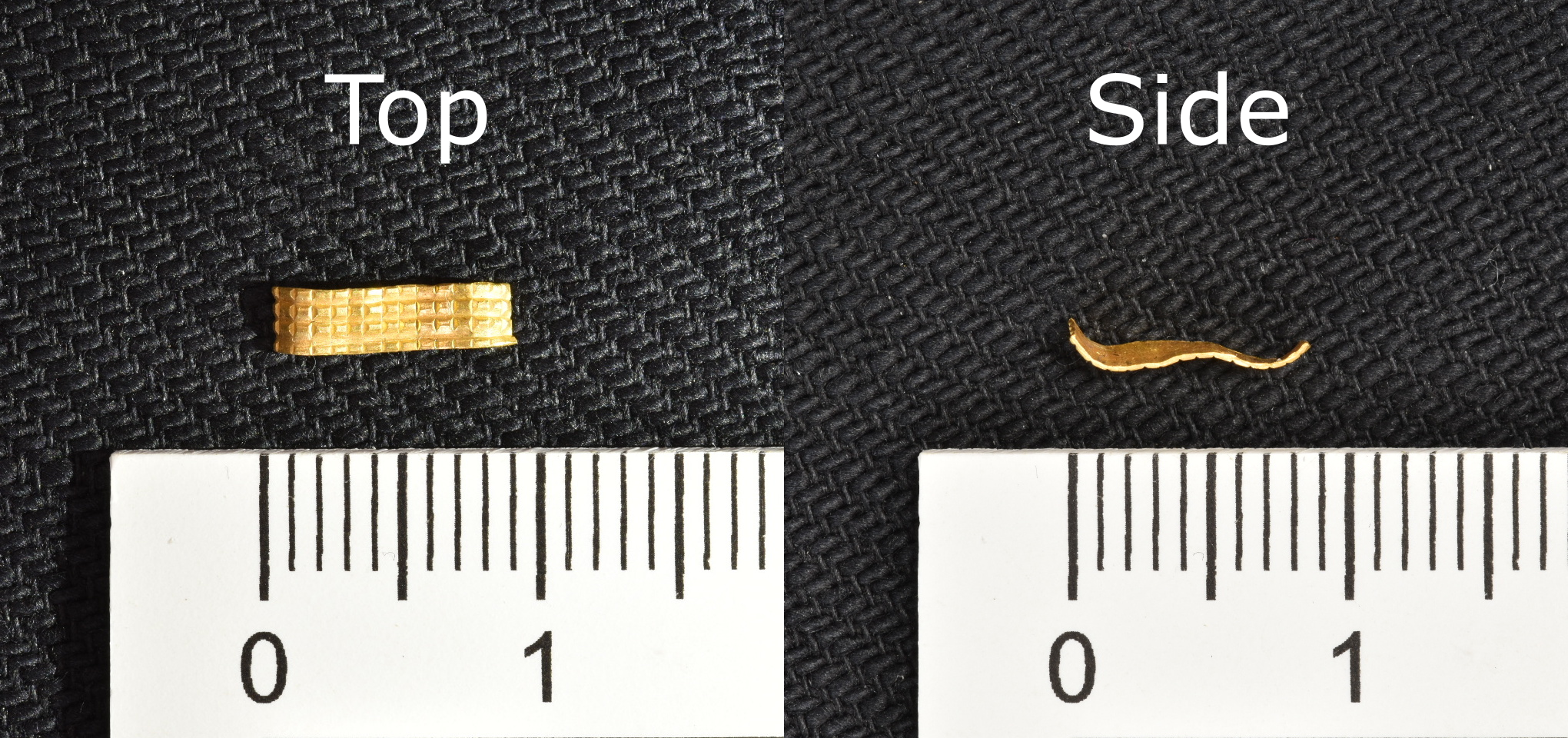Gold ring found during finds sampling
The ring was found by researchers as part of the Urban Ecology and Transitions in the Zanzibar Archipelago Project

A fragment of a small gold ring was found this week by UETZAP team member Mik, as he was processing of wet sieve samples from UETZAP 2019 excavations at Unguja Ukuu. The fragment measures just under 1cm, and is a flattened piece of a ring that was decorated with a grid-like pattern. The context of this find suggests it is from the 8th-9th century CE. Gold finds from these centuries are rare and so the ring is a very unusual find.
Despite frequent reference to the importance of gold in relation to trade along the eastern African coast, the major eastern African gold trade dates to the second millennium CE. References to gold as a commodity in the Periplus Maris Erythraei, a Greco-Roman geography of trading sites, indicate that it may have been available at eastern African ports in the 1st century CE, but it is thought that these might have been Ethiopian or Sudanese sources. Thereafter, the principal sources of gold traded to the Mediterranean for most of the first millennium CE appear to have been in West Africa. According to Cosmas Indicopleustes, a Byzantine geographer writing in the 6th century CE, Ethiopian merchants sometimes made long voyages to the south in order to obtain gold, perhaps from modern Zimbabwe, but there is little indication that this was a significant trade route. In the early second millennium a major gold trade, referred to by contemporary geographers such as Al-Masudi grew rapidly out of inland Zimbabwe, and was traded through the ports of Chibuene and later Sofala in Mozambique, and the entrepôt of Kilwa Kisiwani in Tanzania.
Gold may have been worked at coastal sites in the first millennium, but finds of gold artefacts are uncommon. A few examples are from Kilwa Kisiwani and Manda, and small numbers of gold coins have been found associated with later sites, such as the 13 gold dinars found at the 11th century site of Mtambwe Mkuu on the coast of Pemba Island. A hoard of Abbasid gold coins, since lost, was apparently discovered near the centre of the site at Unguja Ukuu around 1865, with one coin from the assemblage dated to 797 CE. No gold however has since been found in the course of the many excavations at the site.
The fragment of this ring from Unguja Ukuu is now undergoing analysis at the University of York, and will be returned to Zanzibar for preservation and display on our next expedition in 2021.
Urban Ecology and Transitions in the Zanzibar Archipelago Project Website